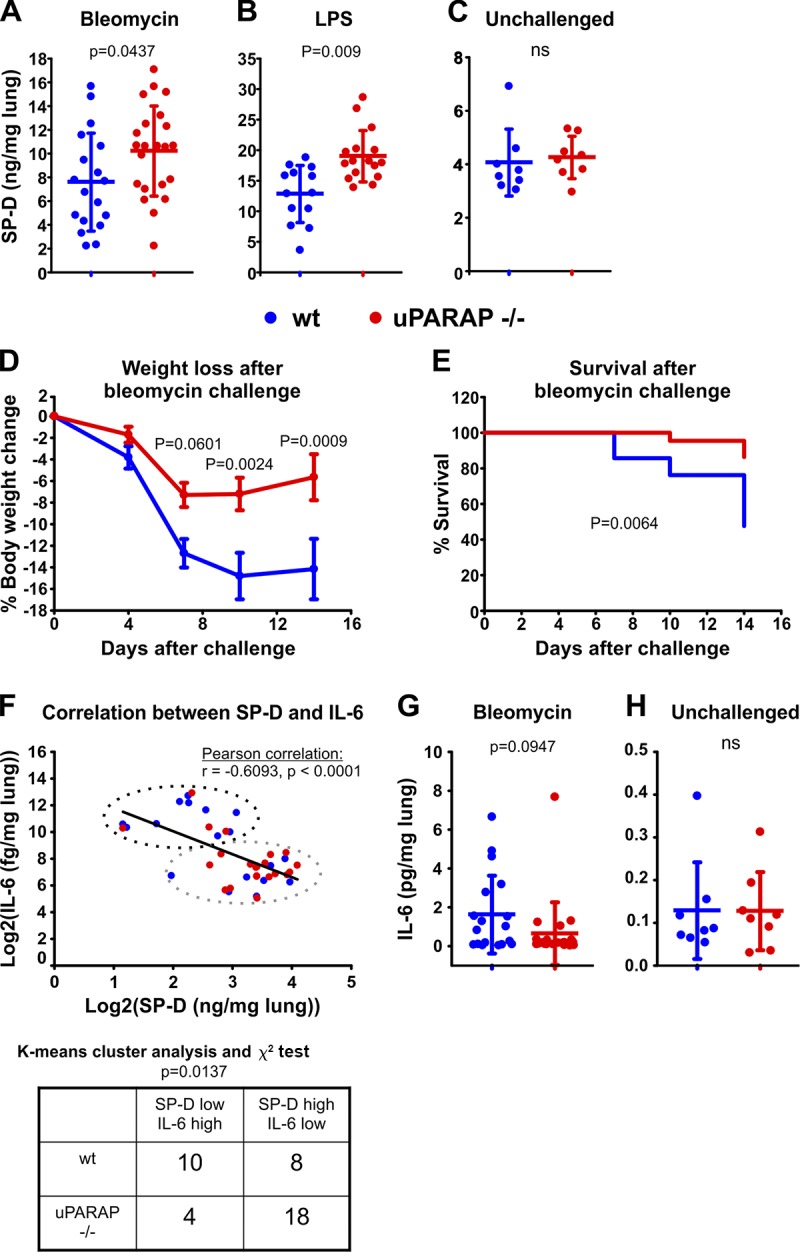Figure 5.

uPARAP regulates endogenous SP-D levels in the injured lung and is decisive for mouse sensitivity toward bleomycin-induced lung injury. (A–C) Endogenous SP-D was determined in BALs collected from bleomycin-treated (A), LPS-treated (B), and unchallenged (C) WT and uPARAP-deficient littermate mice. BALs from bleomycin- and LPS-challenged mice were collected 14 d and 48 h after challenge, respectively. Data are presented as mean ± SD. (D and E) Percent loss of weight (D) and overall survival rate (E) of WT and uPARAP-deficient littermates during a period of 14 d following bleomycin-induced lung injury. n = 22–23. Data are presented as mean ± SEM (D). (F) Correlation between BAL concentrations of SP-D and IL-6 after bleomycin challenge. A combined dataset of log2-transformed SP-D and IL-6 measurements (n = 40) from WT and uPARAP-deficient mice was used to test for correlation (top). An unbiased K means cluster analysis with two clusters was then used to generate an SP-D“low”/IL-6“high” cluster and an SP-D“high”/IL-6“low” cluster, and the number of data points from WT and uPARAP-deficient mice associated with each cluster was determined (top and bottom). (G and H) IL-6 concentrations in BAL from bleomycin-challenged (G) and unchallenged (H) mice. The BAL SP-D and IL-6 concentrations were measured by sandwich ELISA. n = 18–22 (A and G), 13–16 (B), and 8 (C and H). The following statistical tests were used: two-tailed Student’s t test (A–C, G, and H), two-way ANOVA and Sidak’s multiple comparisons test (D), log-rank (Mantel-Cox) test (E), and Pearson correlation and χ2 test (F).
